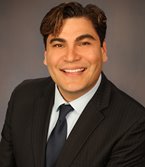April is National Fair Housing Month, a month that celebrates the passage of the Fair Housing Act in 1968. This law prohibits discrimination in the sale, rental, and financing of housing based on race, color, national origin, religion, and gender. It’s also a time when we may all consider our homes and the roles they play in our lives.
Throughout our history, homeownership has played a key role in the American dream. The home is seen as a source of stability, a place for family, and a safe, personal castle in the world. More than just being a place to live, however, a home is also a significant investment that is part of a person and family’s larger financial plan.
For many people, their home is the single most valuable asset they own. Homeowners often spend a large portion of their lifetime earnings in purchasing a home and paying down the mortgage over many years. By the time homeowners reach retirement, they will often have a valuable real estate asset that has appreciated over time with relatively low debt encumbrance. With such high value and low debt, the home may be an excellent resource to help fund retirement. But how can homeowners effectively and affordably draw liquidity from their home to help fund retirement?
One answer is to sell the home.
Homeowners may be able to realize their appreciated value and low encumbrance through a sale, and fund their retirement in part with the proceeds from the sale. With no kids at home and finding it harder to keep up a large house, homeowners approaching retirement will often consider selling their large family house and downsizing to a smaller home. Pocketing the proceeds may be an effective strategy as current tax laws allow the first $500,000 of taxable gain (sales price minus cost basis) to be realized tax free to the sellers. This is one of the best examples of tax forgiveness in the tax code. The tax-free proceeds can then be invested in a diversified portfolio and drawn upon as needed.
There are also options for homeowners who want to continue living in their home while still drawing liquidity from their investment.
Common banking structures, like a home equity line of credit (HELOC), will allow the homeowners to borrow funds against their home pledged as collateral. An effective HELOC may offer homeowners substantial flexibility as they may borrow funds only as they need them and make interest-only payments for much of the life of the credit line. Interest paid on a HELOC may be deductible, but generally only if it is reinvested into the home securing the line.
Some home-buying companies will purchase a home and then lease it back to the former homeowners.
With this strategy, the homeowners receives the full value of the home up front with up to $500,000 of tax-free gains mentioned above. After the sale, however, the former homeowners can continue to live in the home as a tenant, paying rent for the home to the company that purchased it. This can be an effective plan for people who want to continue living in their home for the foreseeable future, but want to sell their home when the real estate market is up.
Homeowners may also consider a reverse mortgage.
With this structure, homeowners can borrow a tax-free lump sum against the value of their house and make no payments while they are alive and living in the home. If the home is sold, the homeowners will pay off the reverse mortgage with sales proceeds. A more common occurrence, however, is the reverse mortgage is paid after the homeowner dies. After the borrowers’ death, the lender will take possession of the home and sell it to pay off the late homeowners’ obligation. Debt repaid only after death can be a very effective retirement strategy. There are strict rules governing reverse mortgages, so homeowners interested in this strategy should seek professional assistance.
Home has a special meaning for each of us. But the home is also a valuable asset that should be considered as part of a larger wealth plan. Homeowners have several options for drawing out the value of their homes and should consult with a professional Financial Advisor to determine the best way to allow their home to serve their financial needs.
 By: Charles Claver |
|

